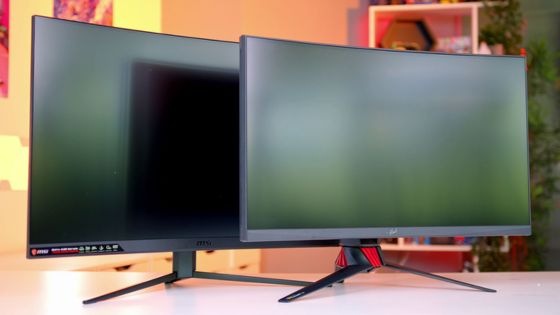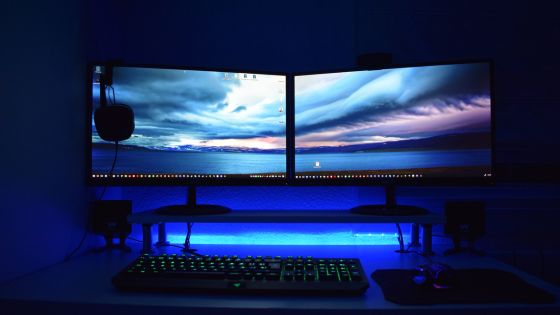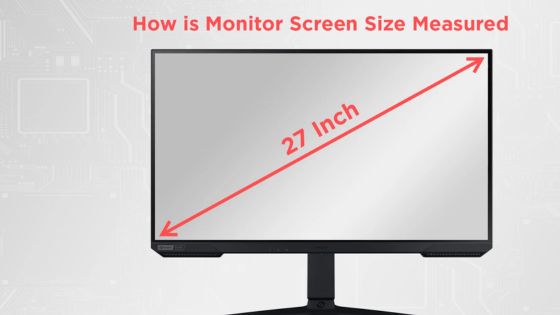How to Choose a Computer Monitor? Expert’s Opinion

In today’s world, most of us use computers for both work and leisure activities. A critical component of these devices is the computer monitor. When choosing a computer monitor, many factors must be considered to ensure that it not only meets your needs but enhances your viewing experience. This article will guide you through the necessary steps to choose the right computer monitor for you.
Why Choosing the Right Monitor is Important?
The monitor is the primary visual interface between you and the computer. Choosing the wrong monitor can lead to eye strain, low-quality images, and overall dissatisfaction with your computing experience. To ensure you are making the right choice, you need to keep the following factors in mind.
Display Types
There are various types of monitors in the market, including LCD, LED, OLED, and CRT. Each of these types has its advantages and disadvantages. LCD and LED monitors are the most common in use today, while CRTs are almost obsolete due to their massive size and weight.
LCD monitors use liquid crystal technology to display images. They are affordable, efficient, and have excellent image quality. LED monitors are an improvement of the LCD, and they utilize light-emitting diodes to light the screen. LEDs are more energy-efficient and have better image quality than LCDs.
OLED monitors use organic compounds to emit light when an electric current is passed through them. They have excellent image quality, color accuracy, and fast refresh rates. CRT monitors use a cathode ray tube to display images and are heavier and bulkier than other types.
Resolution
The resolution of a monitor determines its pixel count and how sharp the images it displays will be. A higher resolution means more pixels, which translates to sharper images.
Common resolutions include 720p (HD), 1080p (Full HD), 1440p (Quad HD), and 2160p (4k UHD). A higher resolution means a better image quality, but it also increases the price. Choosing the right resolution depends on the intended usage and budget.
Refresh Rate
The refresh rate determines how many times a screen refreshes per second. Higher refresh rates mean smoother motion on the screen. The standard refresh rate is 60Hz, which is ideal for most uses.
However, for high-speed activities like gaming, a higher refresh rate is necessary to avoid motion blur and ghosting. Gamers should consider a monitor with a refresh rate of 120Hz or higher.
Size and Orientation
The size and orientation of the monitor impact comfort and productivity. Monitors are available in various sizes, ranging from 17 inches to 32 inches and above. A bigger screen means a more immersive experience but also increases the price.
Similarly, the orientation of the monitor is crucial. Horizontal monitors are ideal for general office work, while vertical monitors are useful for coding, web browsing, and document editing.
Panel Technology
The panel technology determines the accuracy of the colors and the brightness levels. There are various types of panel technologies, including TN, IPS, and VA.
TN panels are the most affordable and have the shortest response times. IPS panels have better colors and wider viewing angles. VA panels have high contrast ratio and deep blacks.
Additional Features
There are various additional features to consider when choosing a monitor. Nvidia’s G-Sync and AMD’s Free Sync the frame rate of the monitor with the graphics card to eliminate screen tearing. HDR produces better colour accuracy and contrast ratio, while curved screens immerse you in the action.
How Do I Choose a Monitor Size?
When choosing a monitor size, many factors must be considered to ensure that it meets your needs and provides a comfortable viewing experience. Here’s a guide on how to choose the right monitor size for you.
Purpose
The primary consideration when selecting a monitor size is the intended usage. If the purpose of the monitor is mainly for general use like checking emails or browsing the web, then a monitor between 21-24 inches should be adequate.
For gaming and creative work like video editing or graphic design, a larger monitor of around 27 inches or more would provide a more immersive experience. A bigger screen is necessary when multitasking, running multiple applications simultaneously, and for video and photo editing.
Viewing Distance
The distance between the monitor and the viewer also plays a significant role in determining the monitor size. Typically, the viewing distance should be around arm’s length away from the screen. The larger the screen, the farther the viewer should sit from it.
A 24-inch monitor should be about two feet away from the viewer, while a 27-inch monitor should be about three feet away. Viewing a larger screen up close can be tiring on the eyes and can cause eye strain.
Resolution
Another factor that affects the monitor size choice is the resolution. A higher resolution monitor will have more pixels per inch and offer sharper images. This means that you can use a larger monitor without the image appearing blurry or pixelated.
A 1080p (full HD) monitor at 24 inches is adequate, while a higher 1440p (Quad HD) monitor is more suitable for a larger 27-inch screen size. A 4k UHD ultra-high-definition monitor is ideal for screens of over 30 inches.
Physical Space
The physical space on your desk is also a crucial factor in choosing a monitor size. Ensure that the monitor can fit comfortably on the desk without obstructing any other peripherals. A large monitor may take up too much space and make it difficult to add other necessary tools, such as a keyboard, mouse, and speakers.
Budget
Ultimately budget will play a role in determining the size of the monitor. Bigger screens with higher resolutions tend to be more expensive. However, it’s worth investing in a larger monitor if you’re going to be spending several hours in front of a screen every day.
When choosing a monitor size, there are many factors to consider, including the intended use, viewing distance, resolution, physical space, and budget. Larger monitors tend to offer a better viewing experience, but it’s important to consider the desk space, the viewing distance, and the resolution before making a choice. Ultimately, a good monitor should balance size and features within your price range, providing a comfortable viewing experience and enhancing your productivity.
How Much Should a Computer Monitor Cost?
The cost of a computer monitor can vary depending on various factors, such as display size, resolution, panel technology, and additional features. Generally, computer monitors range from as low as $100 to as high as $1,500 or more.
Here’s an overview of the different categories of computer monitors and their associated price ranges.
Budget Monitors
Budget monitors typically have smaller screen sizes, usually around 20-24 inches, and lower resolutions, typically 1080p. They often use TN panel technology and have standard refresh rates of 60Hz.
Budget monitors can cost anywhere from around $100 to $200. These monitors are ideal for general use such as browsing the internet, checking emails, or watching videos.
Mid-Range Monitors
Mid-range monitors usually offer higher resolutions than budget monitors, such as 1440p or 4K UHD. They often feature IPS panel technology, which provides better color accuracy and wider viewing angles.
These monitors generally have size ranging from 24-32 inches and are suitable for gaming, video or photo editing, and graphic design. Mid-range monitors can cost between $300 and $500.
High-End Monitors
High-end monitors feature top-of-the-line specifications such as OLED or QLED display technology and HDR capabilities. These monitors usually have wide color gamut displays which provide greater color accuracy, wider viewing angles, and deeper blacks.
High-end monitors are often larger in size, ranging anywhere from 30-49 inches or more, and are commonly used for high-end graphic design, video editing, and gaming. These monitors can cost over $1,000 and, in some cases, up to $1,500 or more.
In addition to the above factors, there are additional considerations that can affect the cost of a monitor. Monitors with additional features such as higher refresh rates, adjustable stands, G-Sync or Free Sync technology, or built-in speakers will often cost more.
Conclusion
Choosing the right computer monitor is critical to your productivity and overall computing experience. Consider factors like display type, resolution, refresh rate, size and orientation, panel technology, and additional features before making a decision. It’s essential to select a monitor that best meets your needs and budget to ensure that you enjoy a comfortable, and productive experience while using your computer.







